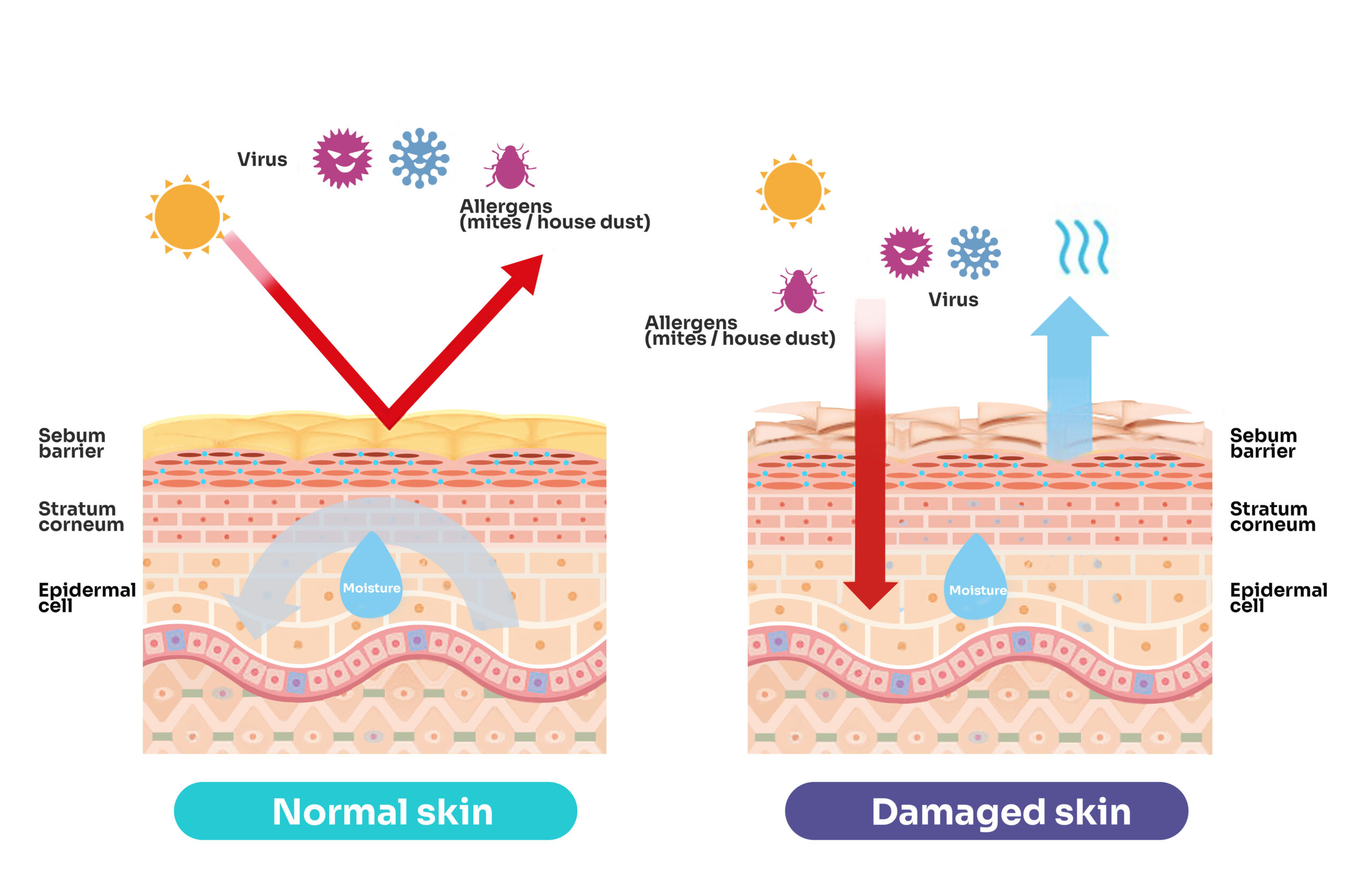Healing wounds has been important for people for a very long time. Our skin protects us from things like germs, sunlight, and extreme temperatures. That’s why people have studied how to heal wounds for ages, and we still keep learning about the best ways to help wounds heal.
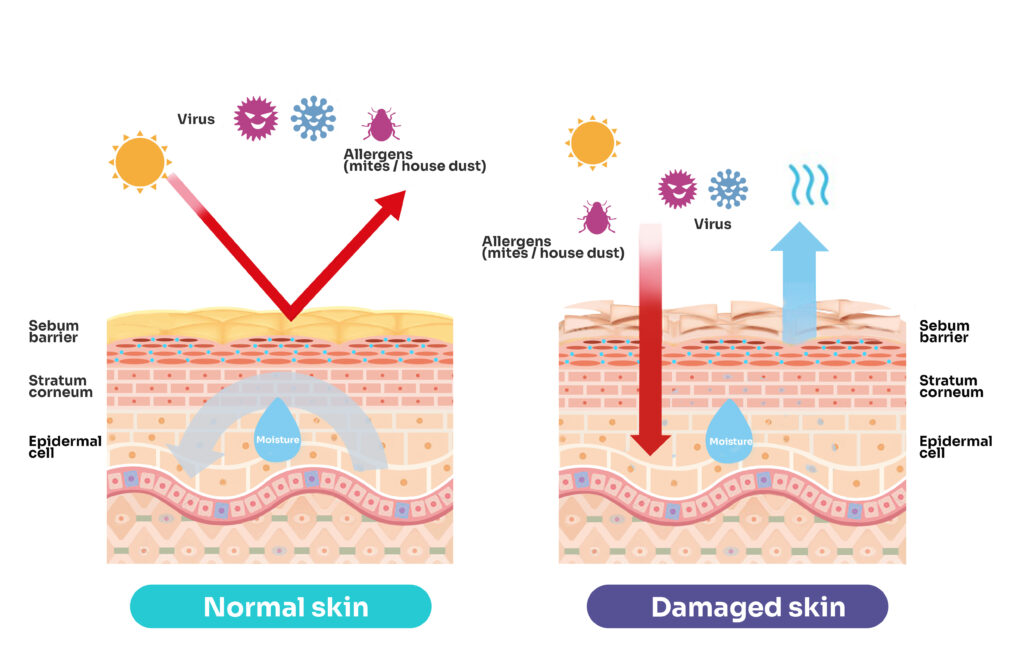
In ancient times, people used poultices, elixirs, and balms. Today, we use modern dressings and advanced therapies. We have gone through many years of trying different things. We passed down knowledge through wisdom, ancient scrolls, and medical books. Now, we have scientists and evidence-based advice to help us give the best wound care.
Moist Wound Healing (MWH)
A big discovery in wound care was made by Dr. George D. Winter. In 1962, he showed that wounds covered with a film healed faster than those exposed to air. He believed that dry scabs slowed down healing. By keeping wounds covered and moist, scabs didn’t form, which sped up healing. Because of this, Winter is known as the father of moist wound healing.
Today, we have many products that help keep wounds moist and allow air to pass through. In the 1980s, there was a lot of progress in making dressings for moist wound healing, and research continues today.
What is Moist Wound Healing?
Moist wound healing (MWH) means keeping the wound covered and moist. This helps keep a slightly acidic environment, which stops bacteria from growing, and low oxygen levels, which helps new blood vessels form.
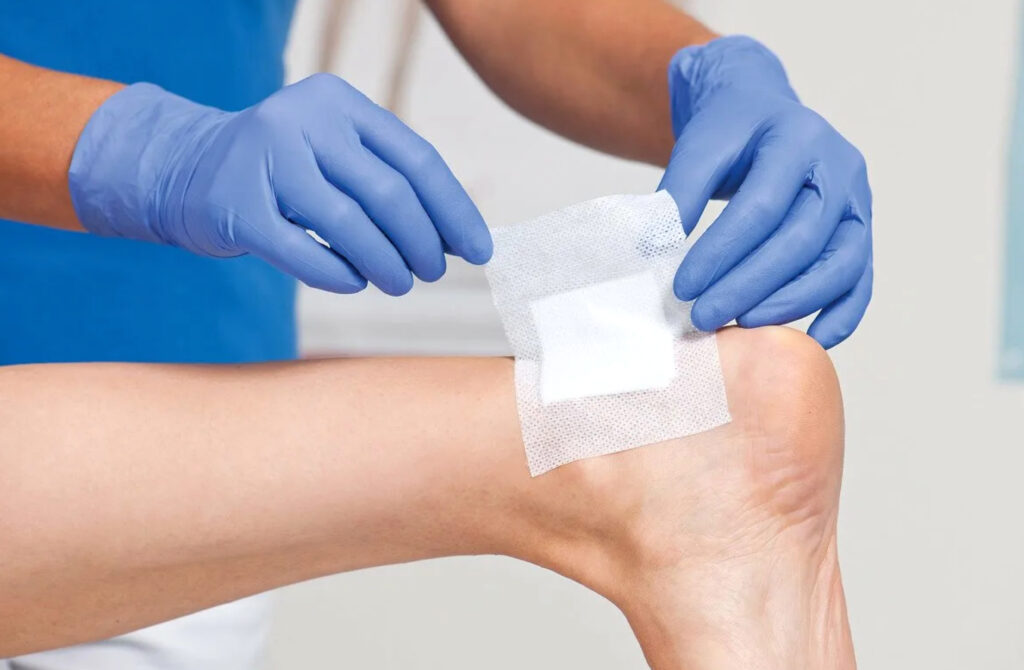
Keeping the wound at the right temperature and moisture level helps chemical reactions, cell movement, and removal of dead tissue. The benefits of MWH are similar to the natural healing process of new wounds.
MWH dressings are made to balance moisture, keep the surrounding skin dry, and protect the wound from physical, chemical, and bacterial threats.
Benefits of Moist Wound Healing on Wounds:
· Shorter and less intense inflammation phase.
· Faster growth of keratinocytes, which are cells that form new tissues.
· Faster and better early differentiation of keratinocytes, improving barrier function.
· Increases fibroblast growth.
· Boosts collagen production.
· Stimulates formation of new blood vessels (angiogenesis).
· Prevents immune cells from dying if the wound bed dries out.
· Early start of wound contraction phase.
· Helps remove dead tissues through hydration, fibrinolysis, and action of enzymes on dead tissues.
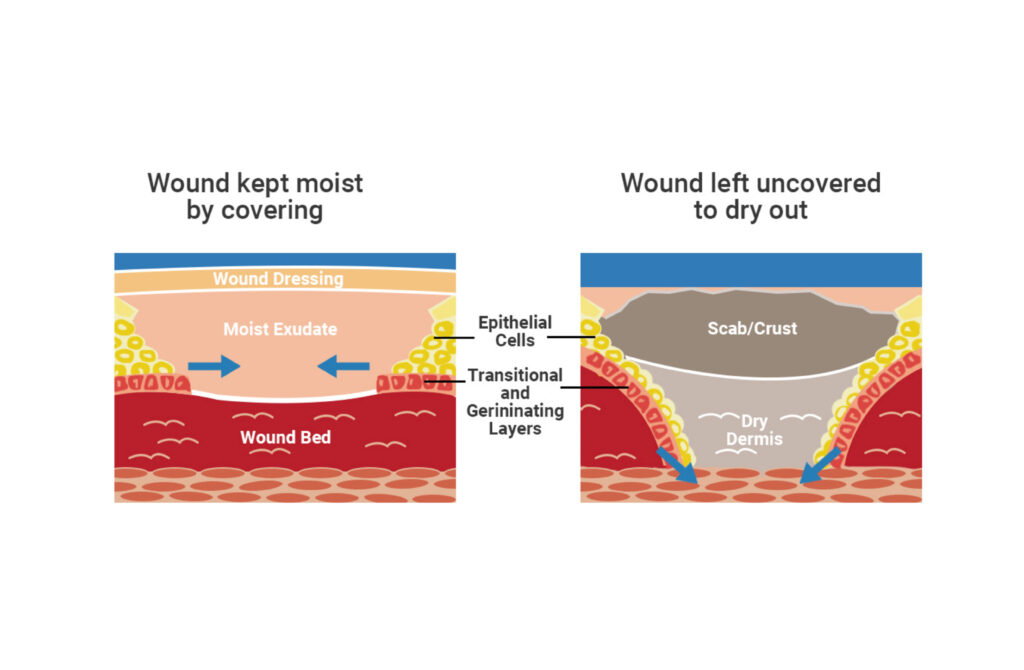
Dry Wound Healing:
On the other hand, there is traditional or dry wound healing. This method uses passive dressings like gauze, antiseptics, and/or topical antimicrobials, applied daily or more often.
What is Dry Wound Healing?
This method keeps the wound clean and dry to prevent infections, although it may slow down healing. Care must be taken when removing the dressing, as patients often find this the most painful part of the treatment. Dry healing should be used for surgical wounds healing by first intention or areas with poor blood supply showing clear signs of necrosis or gangrene. The goal is to stop necrosis before surgically removing the affected areas.
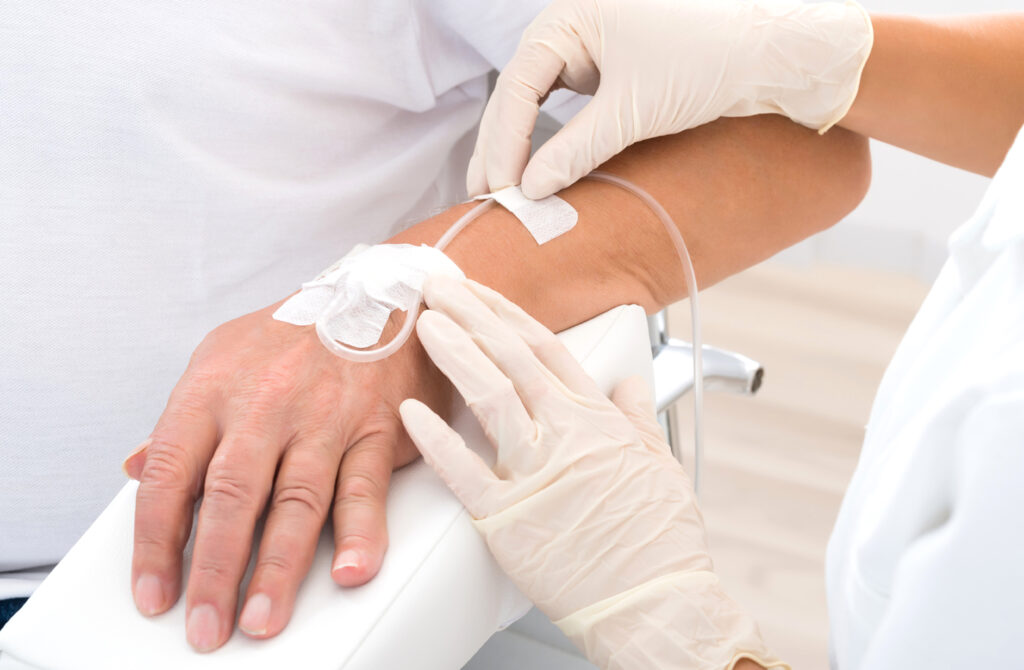
Drawbacks of Traditional Dry Healing:
· More frequent dressing changes due to low absorbency.
· Exudate leaks, causing discomfort and risk of skin maceration.
· Pain when removing the dressing. Gauze dressings stick to the wound bed and don’t distinguish between dead and viable tissues.
· Increased risk of infection: frequent dressing changes increase the risk of contact with potentially infectious microorganisms.
· Higher risk of blisters. Lack of elasticity can cause friction and blisters when the wound location changes.
· Allergies from adhesive tapes and skin irritation from repeated dressing changes.
Conclusions:
Many reviews favor the higher effectiveness of MWH dressings compared to traditional dry dressings. Wounds need a consistent, uninterrupted, and balanced moisture supply. Allowing a wound to dry at any healing stage can cause cell death, greater necrosis, and potentially deeper wounds.
Moreover, many studies show a clear cost-effectiveness advantage despite the higher unit price of MWH dressings. When considering the overall cost of wound care, including the number of dressings, nursing time, hospitalization days, etc., the final cost is lower than that of gauze dressings.
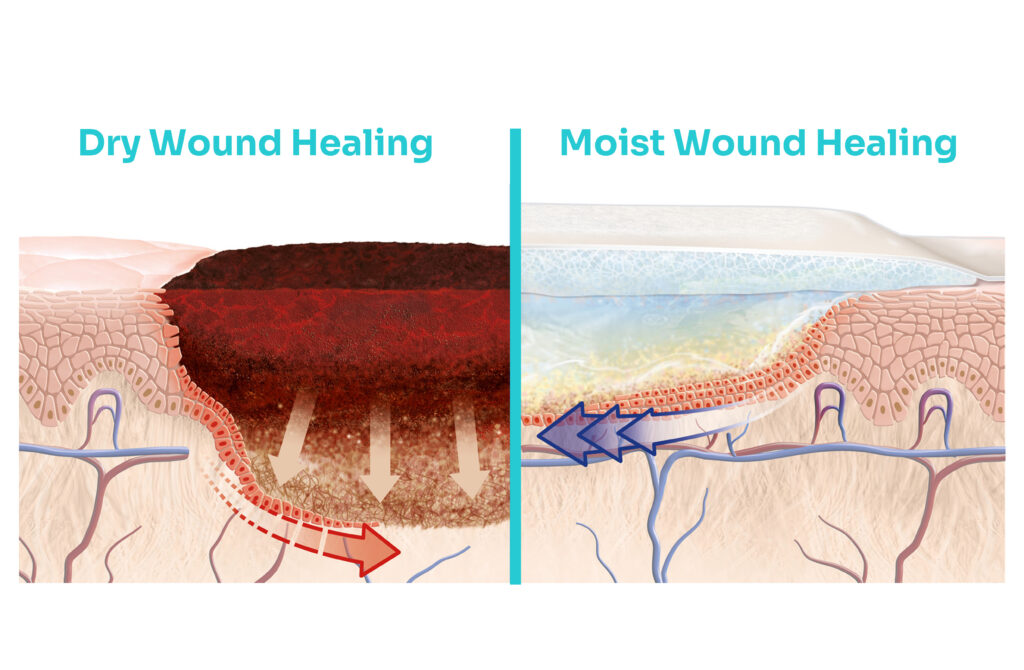
Advantages of Moist Wound Healing (MWH) over Dry Healing:
- Promotes Healing: Maintains the right moisture levels to help wounds heal faster.
- Versatility: MWH dressings come in various types, offering different absorbency, antibacterial properties, and water resistance, unlike gauze dressings.
- Ease of Use: MWH dressings are easier to apply and remove.
- Patient Comfort: They cause less pain during dressing changes and are less traumatic since they don’t stick to the wound bed.
- Protection: They shield wounds from pathogens and foreign particles.
- Reduced Frequency of Dressing Changes: This results in less trauma to the wound bed.
- Adaptability: MWH dressings are suitable for different stages of the healing process and various wound conditions (type of tissue, amount of exudate, bacterial load, location, surrounding skin, etc.).


